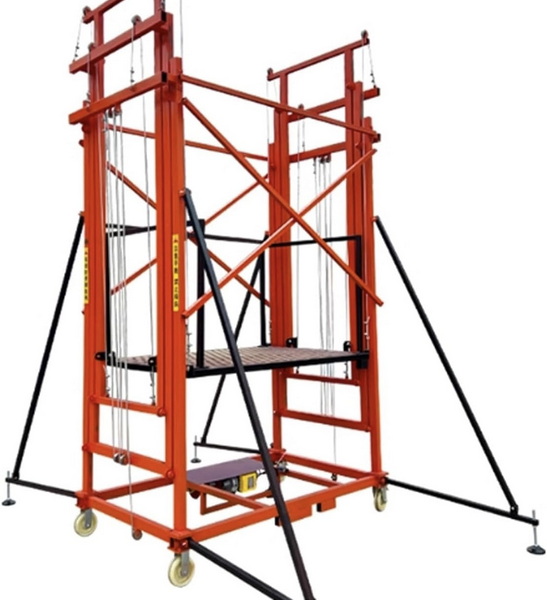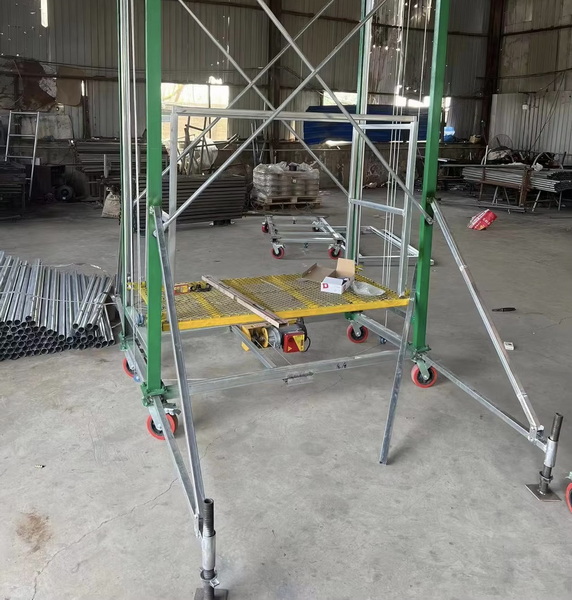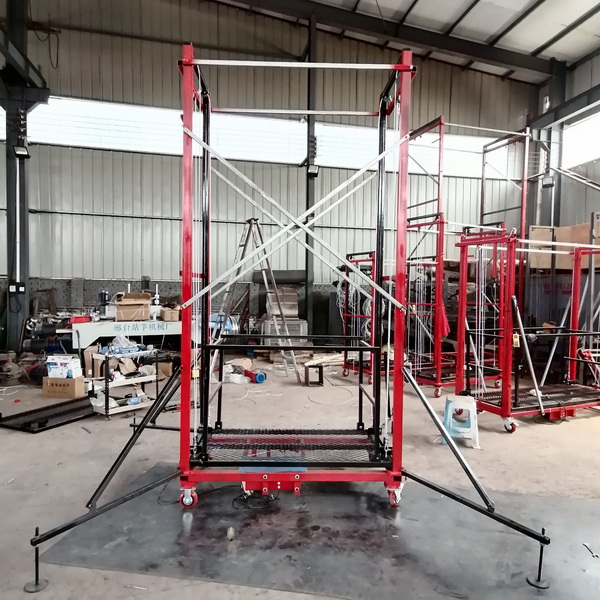Content Menu
● Introduction to the Power Pole System
● Key Features of the Power Pole System
● How the Power Pole System Works
>> 1. Assembly Process
>> 2. Climbing Mechanism
>> 3. Safety Features
● Applications of the Power Pole System
>> 1. Residential Projects
>> 2. Commercial Projects
● Safety Considerations for the Power Pole System
● Comparison with Traditional Scaffolding Systems
● Case Studies: Successful Use of the Power Pole System
>> 1. Residential Renovation
>> 2. Commercial Maintenance
● Additional Accessories for the Power Pole System
>> 1. PowerLatch
>> 2. Standoff Tie
● Working Near Overhead Power Lines
● Conclusion
● FAQ
>> 1. What are the primary advantages of the Power Pole system over traditional scaffolding?
>> 2. How does the Power Pole system ensure safety during use?
>> 3. What is the maximum work height achievable with the Power Pole system?
>> 4. Can the Power Pole system be used without wall ties?
>> 5. How does the PowerLatch enhance the Power Pole system?
● Citations:
The electric scaffolding Power Pole system, developed by ReechCraft, is a revolutionary tool in the construction industry, offering a safer, faster, and more efficient way to perform tasks at heights. This system is designed to replace traditional pump jack scaffolding, providing a drill-powered climbing unit that significantly reduces setup time and physical strain. This article will delve into the workings of the electric scaffolding Power Pole system, highlighting its features, benefits, and applications.

Introduction to the Power Pole System
The Power Pole system is a modular scaffolding solution that combines ease of use with enhanced safety features. It is ideal for residential and commercial projects, particularly where access to tight spaces is required.
Key Features of the Power Pole System
1. Drill-Powered Climbing Unit: The system uses a drill-powered gearbox, eliminating the need for manual pumping and reducing fatigue. This design makes climbing three times faster than traditional systems.
2. Quick Attach Poles: The poles feature tools-free couplers, allowing for fast assembly and disassembly. This streamlined design facilitates easy setup and teardown.
3. Stable Outriggers: The outrigger base provides stability with rugged steel stabilizers, ensuring the system remains secure during use.
How the Power Pole System Works
1. Assembly Process
The Power Pole system is assembled using modular components, including poles, couplers, and the climbing unit. The tools-free couplers enable quick connection of pole sections, making setup efficient.
2. Climbing Mechanism
The climbing unit is powered by a drill, which drives the gearbox. This mechanism allows for smooth and rapid ascent, reducing the physical effort required compared to manual systems.
3. Safety Features
- Lock Pawl: Ensures the platform remains securely locked in place.
- Overspeed Brake: Automatically stops the platform in case of overspeed, providing an additional safety layer.
- Stable Midrails: Keep the walkboard secure, reducing the risk of accidents.
Applications of the Power Pole System
1. Residential Projects
The Power Pole system is ideal for residential projects due to its landscape-friendly design and ability to work without wall ties up to 24 feet. It provides easy access to siding, roofing, and windows, enhancing safety and efficiency.
2. Commercial Projects
In commercial settings, the Power Pole system offers flexibility and speed, making it suitable for tasks such as maintenance and repairs. Its high load capacity and stable structure ensure safe working conditions.
Safety Considerations for the Power Pole System
Safety is paramount when using the Power Pole system. Key considerations include:
- Regular Inspections: Conduct regular checks for damage or wear.
- Proper Assembly: Ensure all components are securely connected.
- Fall Protection: Implement fall protection measures such as guardrails and safety nets.

Comparison with Traditional Scaffolding Systems
| Feature |
Power Pole System |
Traditional Pump Jack |
| Assembly Speed |
Fast, tools-free couplers |
Slow, manual pumping required |
| Climbing Speed |
Three times faster |
Manual effort required |
| Safety Features |
Overspeed brake, lock pawl |
Limited safety features |
| Load Capacity |
650 lbs per pole |
Generally lower |
Case Studies: Successful Use of the Power Pole System
1. Residential Renovation
The Power Pole system has been successfully used in residential renovation projects due to its ease of assembly and landscape-friendly design. It provides a stable working platform for tasks such as siding and roofing.
2. Commercial Maintenance
In commercial settings, the Power Pole system is used for maintenance tasks, offering flexibility and speed. Its high load capacity and stable structure ensure safe working conditions.
Additional Accessories for the Power Pole System
1. PowerLatch
The PowerLatch is an optional quick attach system that enhances the efficiency of the Power Pole system. It allows for easy attachment and detachment of platforms, further streamlining the setup process.
2. Standoff Tie
The Standoff Tie accommodates most pitch roof lines, providing a stable wall tie that securely attaches the Power Pole system to different types of buildings.
Working Near Overhead Power Lines
When using scaffolding systems like the Power Pole near overhead power lines, it is crucial to manage risks effectively. This includes ensuring a safe distance from power lines and using protective measures such as hoarding and enclosure systems to prevent accidental contact.
Conclusion
The electric scaffolding Power Pole system offers a revolutionary approach to scaffolding, combining speed, safety, and efficiency. Its drill-powered climbing unit and modular design make it ideal for various construction projects, from residential renovations to commercial maintenance tasks. By understanding how the Power Pole system works, you can leverage its benefits to enhance project productivity and ensure a secure working environment.

FAQ
1. What are the primary advantages of the Power Pole system over traditional scaffolding?
The Power Pole system offers faster assembly and climbing speeds, enhanced safety features like the overspeed brake, and a landscape-friendly design, making it ideal for residential and commercial projects.
2. How does the Power Pole system ensure safety during use?
The Power Pole system includes safety features such as the lock pawl, overspeed brake, and stable midrails. Regular inspections and proper assembly are also crucial for maintaining safety.
3. What is the maximum work height achievable with the Power Pole system?
The Power Pole system can reach a maximum work height of 75 feet, requiring midspan ties every 16 feet and one at the top.
4. Can the Power Pole system be used without wall ties?
Yes, the Power Pole system can be used without wall ties up to a height of 24 feet, thanks to its outrigger base and V-Brace tie.
5. How does the PowerLatch enhance the Power Pole system?
The PowerLatch is an optional quick attach system that allows for easy attachment and detachment of platforms, further streamlining the setup process and enhancing efficiency.
Citations:
[1] https://www.industrialproducts.com/reechcraft-powerpole-scaffold-jack-pump-jack-replacement.html
[2] https://www.reechcraft.com/powerpole/
[3] https://www.evoenergy.com.au/-/media/Project/Evoenergy/EVO/Documents/Safety/Scaffolding-near-overhead-powerlines.pdf
[4] https://www.alumapole.com/images/AlumaScaffInstructSht21.pdf
[5] https://www.associated-scaffolding.com/sales/reechcraft-power-pole-system
[6] https://www.youtube.com/watch?v=-n7iEHZlNXs
[7] https://www.safeworkaustralia.gov.au/system/files/documents/1703/scaffolding-near-ohel-information-sheet.pdf
[8] https://industrialladder.com/pump-jacks/reechcraft-power-pole-system/






















